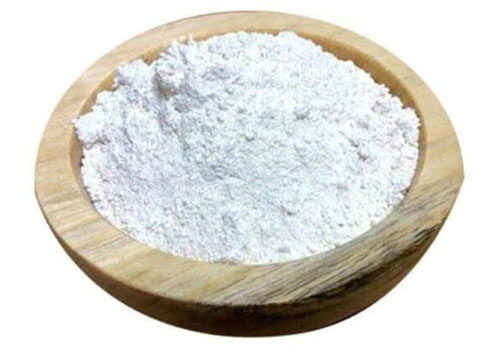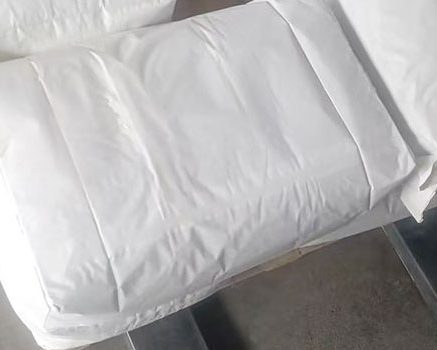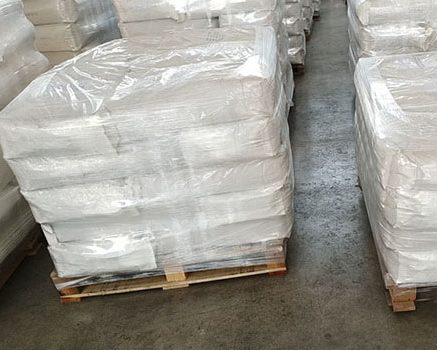Hydrophobic powder consists of micron or nanometer-sized particles treated with a water-repellent coating, which is usually made of silica, polymers or fluorinated compounds. These particles form a rough surface structure that prevents water droplets from adhering and allows them to roll off easily, thus achieving the effect of waterproofing. Hydrophobic powder is designed to repel water and other liquids and is widely used in various fields from industrial coatings to consumer products.
Silicone Hydrophobic Powder for Sale in Our Company
Silicone hydrophobic powder is a class of highly efficient waterproof materials with organosilicon compounds as the main component. It is widely used in construction, textiles, electronics, automobiles and other fields. Its unique molecular structure gives the material excellent hydrophobic properties while being durable and environmentally friendly.
It is a chemical preparation with polysiloxane as the core ingredient. It forms a hydrophobic film on the surface of the material through physical adsorption or chemical reaction, making it impossible for water molecules to infiltrate, thereby achieving waterproof, moisture-proof, anti-fouling and other effects.
The hydrophobic powder for sale in our company is a highly efficient active silicone powder. Only a small amount of addition is required to achieve excellent dispersibility in mortar. And by reacting with cement hydration products, it significantly improves the hydrophobicity and durability of cement-based materials. It can be used in decorative mortar, waterproof mortar, plastering mortar, caulking agent, thermal insulation mortar and prefabricated components. It is recommended to use it in combination with the Polycarboxylate Superplasticizer for sale in our company for better results.
| Detection index | HP-01N | HP-01T | HP-02K | HP-03T |
| Appearance | White powder | |||
| Bulk density(kg/m3) | 400-600 | 300-500 | 400-600 | 500-700 |
| PH value (10% in water) | 7-9 | 7-9 | 7-9 | 7-9 |
| Packaging | In 25kg paper bag | |||
| Storage | No more than 12 months under condition 5-35°C, dry and cool. Prevent direct sunlight, moisture and be pressed for caking. When it is more than 12 months, it still could be used if there is no caking. | |||
Excellent Performance of Silicone Hydrophobic Powder
Excellent waterproof performance. Silicone hydrophobic powder can form a hydrophobic layer after the mortar substrate is cured, preventing water penetration, while maintaining the air permeability of the substrate, effectively preventing liquid water from penetrating through the surface or capillaries.
Durability and protection. This material can prevent salt precipitation, alkali efflux and freeze-thaw peeling, has anti-pollution and anti-weathering effects, and is suitable for various substrates that need to prevent liquid water penetration.
Environmental protection and safety. Silicone hydrophobic powder is non-toxic and non-corrosive, suitable for sensitive environments such as grain depots and residences, and will not cause harm to the environment and human health.
Easy to use and dispersibility. Silicone hydrophobic powder is easy to disperse in water and can be mixed with powdered materials. The addition amount is usually between 0.1% and 0.5%, which will not affect the ease of use of the dry mix system.
Resistance to UV degradation. This material can resist UV degradation and has good durability and stability.
Wide range of applications. Silicone hydrophobic powder can be used in a variety of building materials such as plaster, plastering, caulking agent, external wall insulation system, decorative mortar and exterior wall painting to improve its waterproof performance.
- Main Applications
- How Does It Work
Construction field. Organic silicon hydrophobic powder has a wide range of applications in the construction field. It can be used in decorative mortar, caulking agent, polymer waterproof mortar, plastering mortar, insulation board, dry powder coating and other materials to improve the hydrophobicity of these materials and prevent liquid water from penetrating into the solidified cement-based materials through the surface or capillary action. In addition, it can also be used in external wall insulation system, external wall painting to form a barrier to prevent liquid water from penetrating through capillaries.
Waterproof and moisture-proof role. Silicone hydrophobic powder can increase the hydrophobicity of cement-based materials and reduce the absorption of water by materials. It is suitable for hydrophobic protection of concrete pavement bricks and inorganic thermal insulation materials, as well as weathering and moisture-proof and mildew-proof maintenance of historical buildings.
Other application areas. In addition to the construction field, silicone hydrophobic powder is also widely used in rubber, sealants, coatings, cosmetics and other fields. It has the characteristics of high temperature resistance, weather resistance, insulation, ultra-low surface tension, etc. It can improve the waterproofness, lubricity and service life of the product. For example, after adding silicone hydrophobic powder to rubber rain boots and automotive sealants, it can better resist temperature changes, ultraviolet rays, chemical corrosion, etc.
Hydrophobicity formation. Silicone hydrophobic powder achieves hydrophobic treatment through a two-step reaction. First, a hydrolysis reaction occurs, followed by a condensation reaction. These two steps work together to allow silicone to be firmly fixed on the surface and pores of inorganic buildings, thereby giving them hydrophobicity. Specifically, the Si-O-Si bond in the silicone molecule is adsorbed on the mineral surface, while the methyl or other alkyl groups are neatly arranged outside. These groups have very low surface tension and are hydrophobic groups, so this directional silicone molecular film exhibits extremely strong hydrophobicity.
Molecular structure design. The molecular structure design of organosilicon nano waterproofing agent is the basis for its reduction of water surface tension. Long-chain polysiloxane is usually used as the basic skeleton, and various functional groups are connected to these molecular chains. The flexibility of the polysiloxane main chain is extremely high, and the bond energy of the silicon-oxygen bond is large, which makes the molecular chain easy to spread on the solid surface and form a uniform film.
The role of hydrophilic groups. Although the main function of organosilicon nano waterproofing agent is to form a hydrophobic layer, its molecules may also contain a small amount of hydrophilic groups. These hydrophilic groups can briefly interact with water molecules when they are initially exposed to water, guiding the organosilicon molecules to better penetrate into the substrate or spread on its surface. As the reaction proceeds and the hydrophobic layer is formed, these hydrophilic groups are gradually embedded or transformed, and finally transformed into a stable hydrophobic structure.
Forming a hydrophobic layer. The key to reducing water surface tension is that organosilicon nano waterproofing agent forms a dense hydrophobic layer on the surface of the substrate. This hydrophobic layer is composed of long-chain polysiloxane molecules, which are tightly bound to the surface of the substrate through chemical bonds or physical adsorption. Since the hydrophobic groups such as methyl groups on the polysiloxane molecular chain are arranged outward, it is difficult for water molecules to wet and penetrate this film.
Penetration and filling. Organic silicon nano waterproofing agents have good permeability and filling properties, and can penetrate into the micropores and capillaries inside the substrate. These tiny pores and channels are often the main path for water penetration. Through penetration and filling, organic silicon nano waterproofing agents not only close these channels, but also reduce the roughness and porosity of the substrate surface, thereby further enhancing the waterproof effect.
Application effect. Organic silicon hydrophobic powder can significantly reduce the water absorption of cement-based materials, and its performance will not be affected even if it is immersed in water for more than 24 hours. It can prevent liquid water from penetrating into the cured cement-based materials through the surface or capillary action, providing long-lasting waterproof protection.





